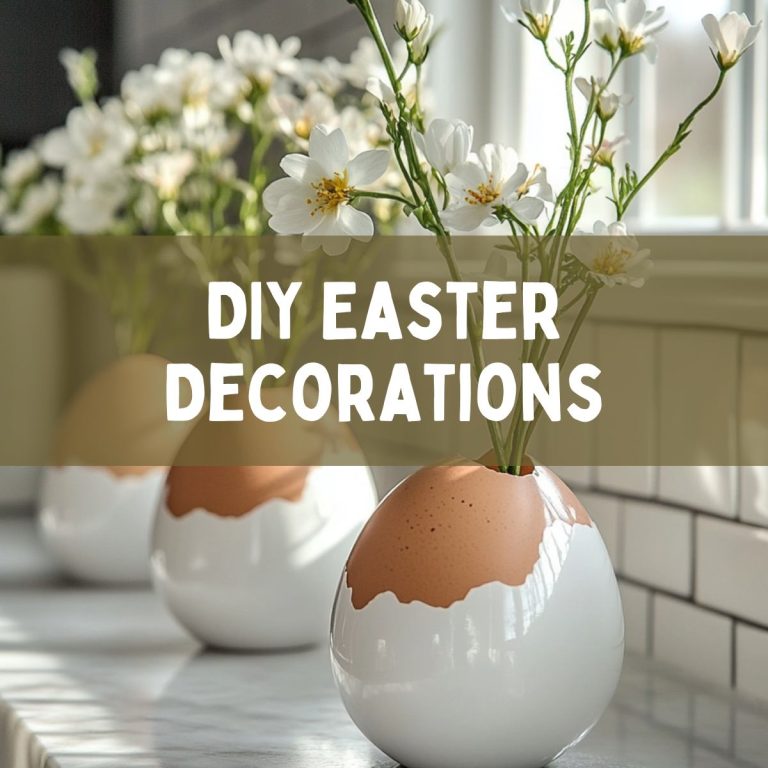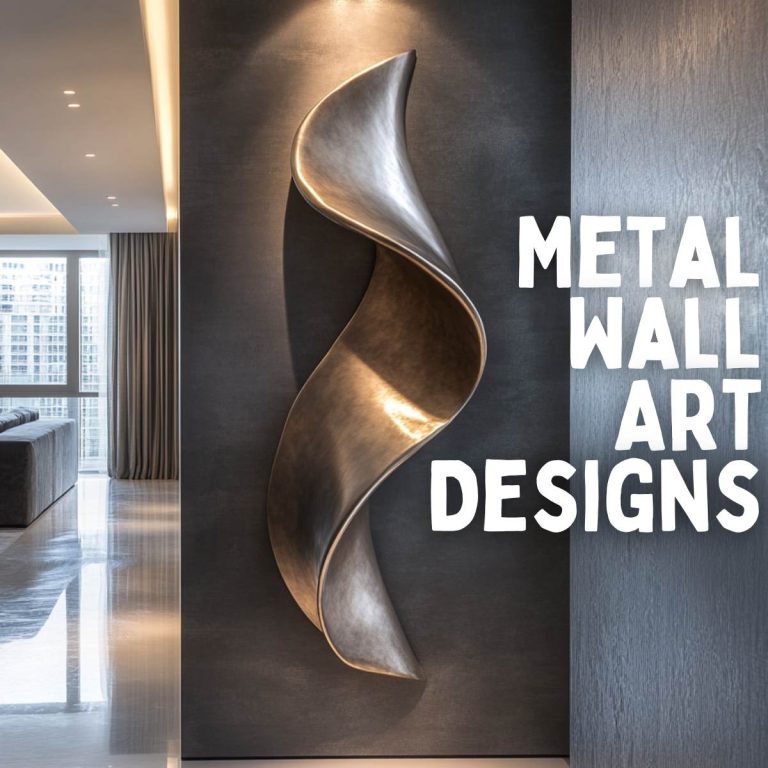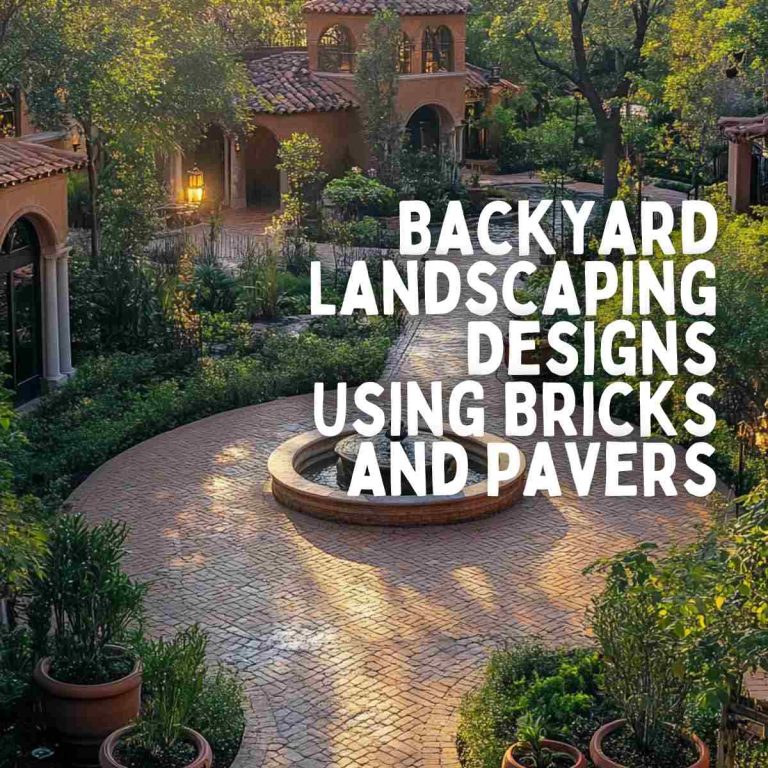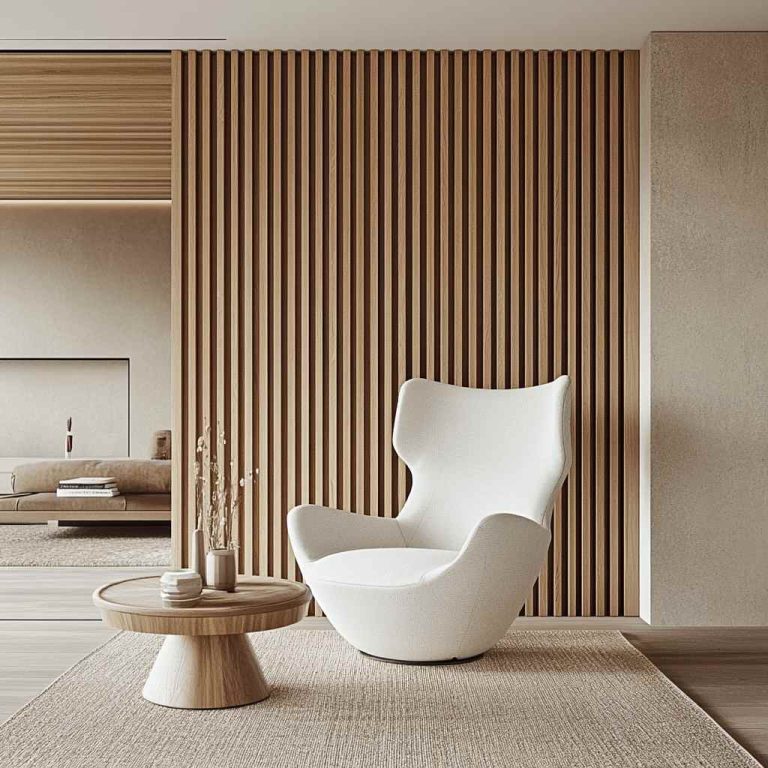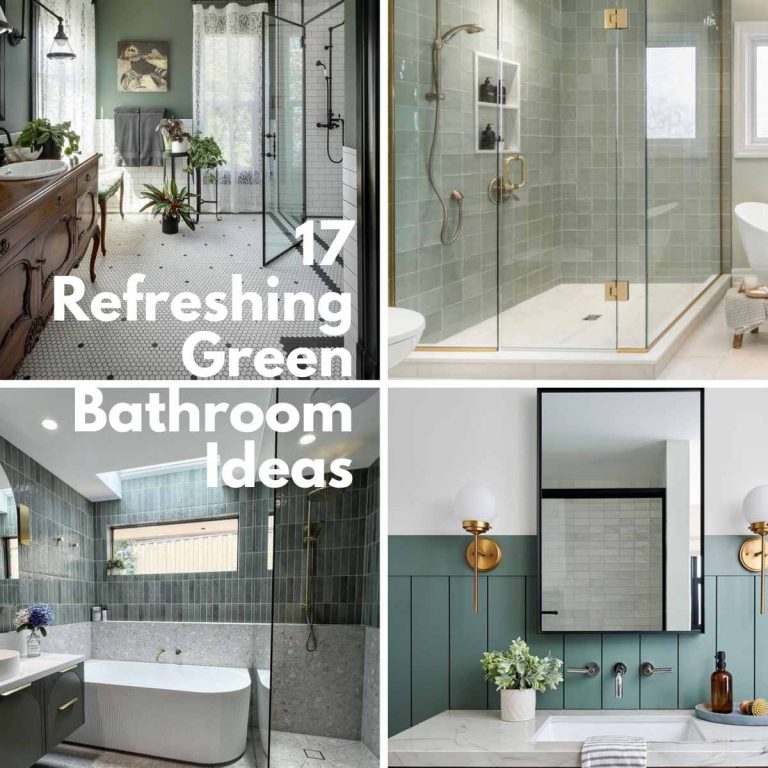Modern Minimalist Spaces Enhanced by Ceramic Art as Home and Office Decor
The minimalist design movement has captivated the modern world with its serene sensibility and stripped-down elegance. It’s not just a design trend—it’s a lifestyle philosophy. Minimalism champions clean lines, clutter-free spaces, and a deliberate focus on what truly matters. In both homes and offices, this design ethos fosters clarity, functionality, and a sense of calm.
However, there’s a fine line between simplicity and sterility. While bare walls and neutral palettes provide peace, they can sometimes lead to spaces that feel impersonal or emotionally distant. That’s where art—especially ceramic art—plays a transformative role. Unlike bold, loud decor, ceramic pieces complement minimalist environments with their subtle texture, organic forms, and tactile presence.
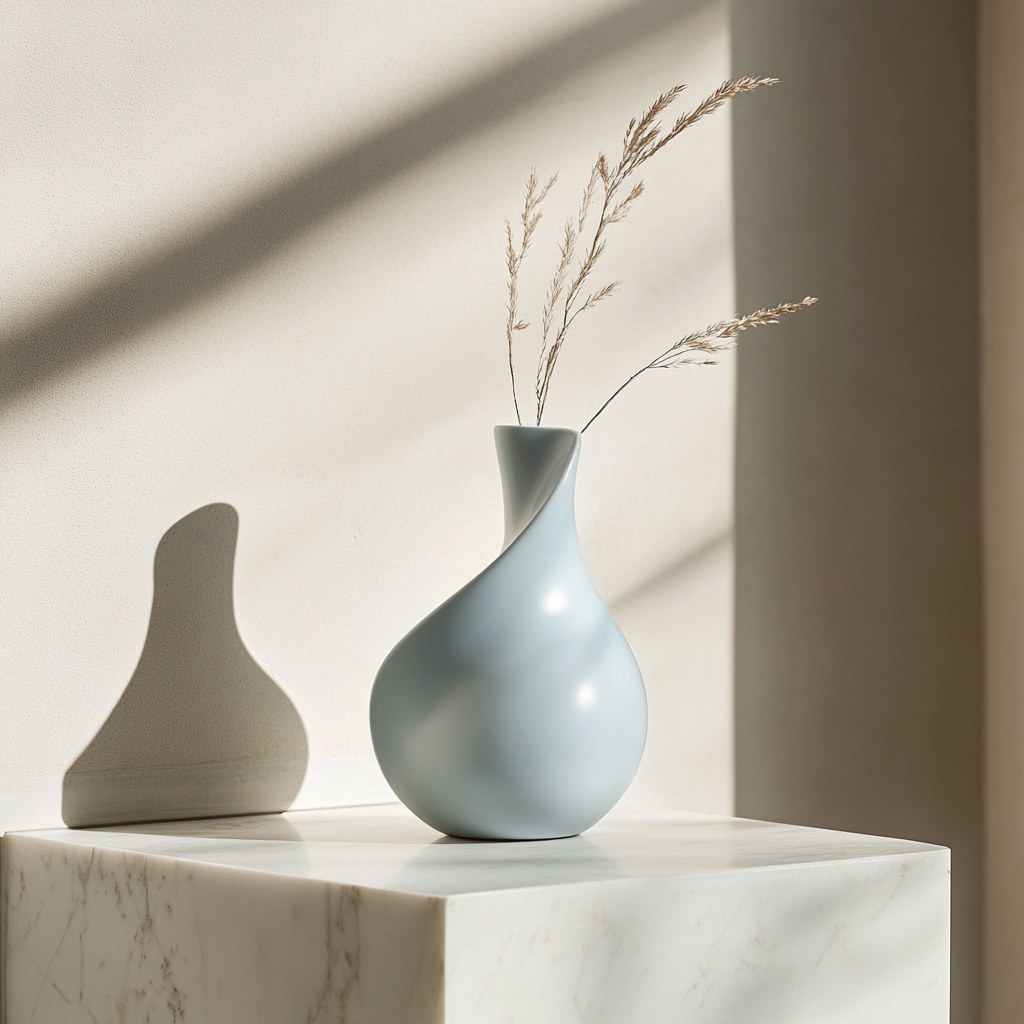
Ceramic art doesn’t demand attention; it invites quiet admiration. Whether in the form of a handcrafted vase on a console table or a matte sculpture nestled into a reading nook, ceramic art infuses minimalist spaces with soul, softness, and a natural elegance. This article explores how ceramic art can be masterfully incorporated into modern minimalist homes and offices, enhancing both functionality and atmosphere.
Understanding the Foundation of Modern Minimalism
The Philosophy Behind Minimalist Design
Minimalism is about intentional living. At its heart is the belief that by removing excess, we make space for what truly matters. Minimalist design avoids visual noise, emphasizes quality over quantity, and focuses on functionality.
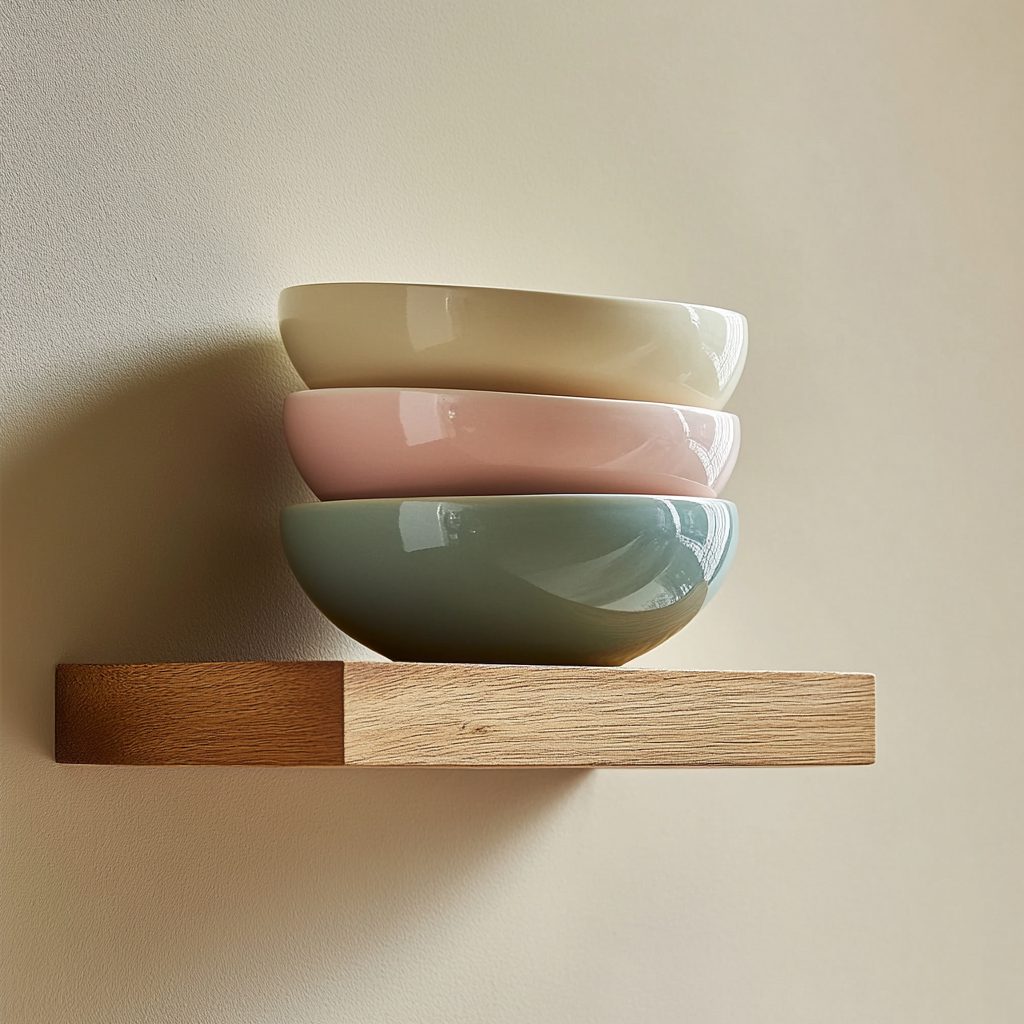
Visual Traits of Minimalist Interiors
Key visual elements include:
- Neutral color schemes: whites, greys, taupes, and soft earth tones
- Clean architectural lines and open floor plans
- Thoughtfully chosen furniture with multi-functional purposes
- Minimal ornamentation and clutter-free surfaces
Why People Gravitate Toward Minimalism
Minimalist spaces encourage mental clarity and calmness. They reduce sensory overload and promote mindfulness. In fast-paced modern life, having a peaceful, clean environment at home or work becomes therapeutic.
Ceramic Art: A Harmonious Match with Minimalism
What Makes Ceramic Art Unique
Ceramic art involves shaping and firing clay to produce both decorative and functional objects. Its unique charm lies in:
- Natural origins: Clay is an earthy, organic material.
- Handcrafted texture: Slight imperfections make each piece unique.
- Timeless appeal: Ceramic art transcends trends and works across eras.
- Versatility: From matte to glazed, rustic to refined—there’s a style for every interior.
The Organic Language of Ceramics
The soft curves, neutral tones, and tactile finishes of ceramics speak the same visual language as minimalist design. These pieces fit seamlessly into serene spaces without disrupting the sense of order and restraint.
Benefits of Adding Ceramic Art to Minimalist Spaces
1. Adds Warmth Without Clutter
Minimalism sometimes gets critiqued for being cold or sterile. Ceramic art brings warmth, inviting the senses through texture and form without adding visual chaos.
2. Introduces Natural Elements
Ceramic pieces often retain earthy aesthetics. When placed against crisp white walls or monochrome furniture, they act as grounding elements, reconnecting the space with nature.
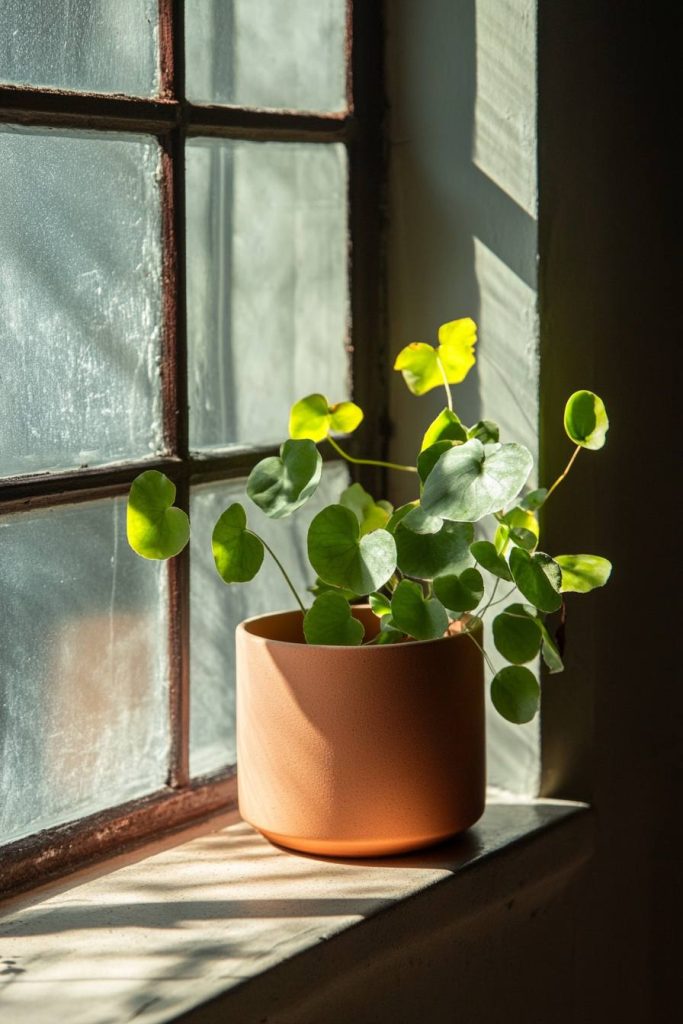
3. Offers Functional Beauty
Ceramics are not only decorative—they are inherently functional. Planters, bowls, mugs, trays, and lamps made of ceramics double as artwork and practical household items.
4. Encourages Mindful Living
Handmade ceramics often represent slow craftsmanship and intentional creation. Incorporating these objects into daily life fosters appreciation for artistry and mindfulness.
Incorporating Ceramic Art in Minimalist Homes
Living Room: Centering Calm and Character
- Statement Vases: Use tall or wide vases in soft tones to create sculptural silhouettes. Place them on console tables, floor corners, or floating shelves.
- Sculptural Accents: A single large ceramic sculpture or a trio of small pieces on a coffee table can anchor the space visually.
- Textured Bowls: Decorative bowls with subtle patterns or glazes add detail without visual overload.
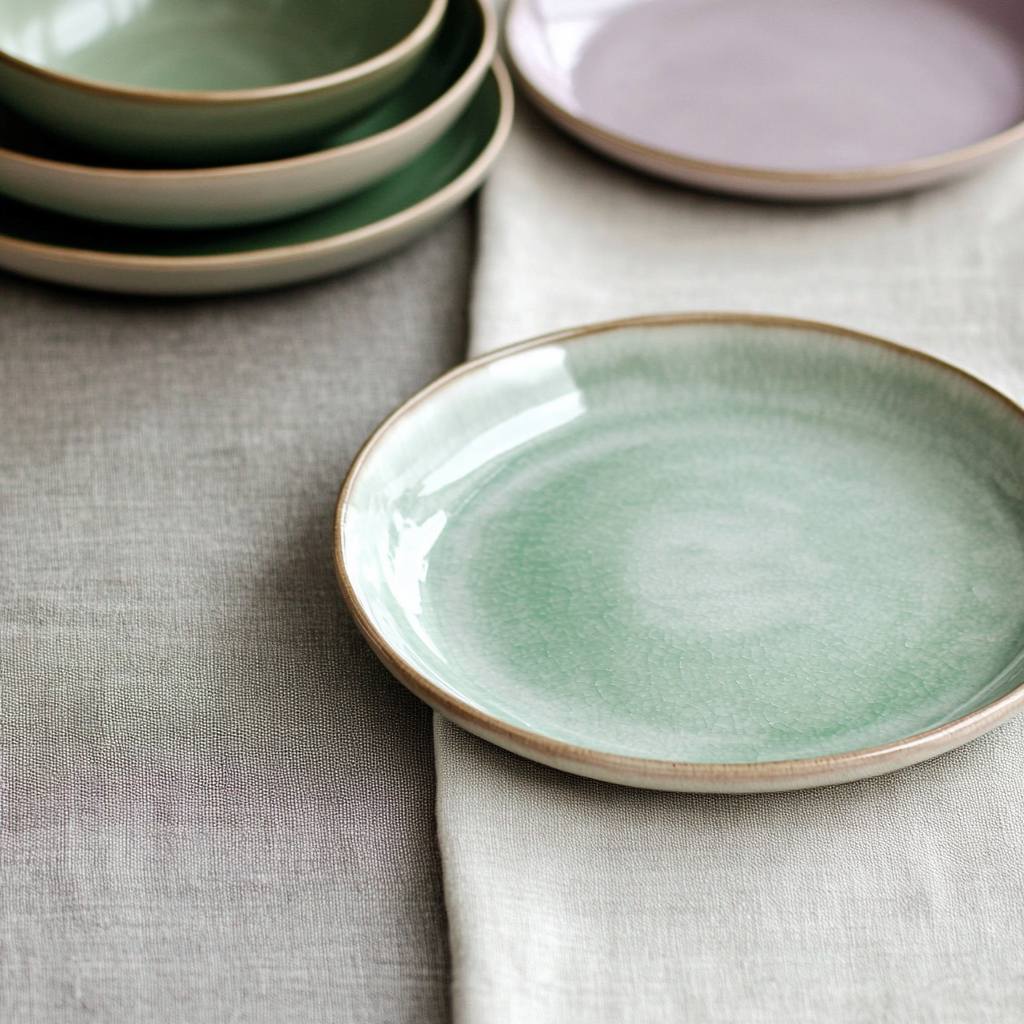
Kitchen and Dining Area: Functional Elegance
- Artisanal Dishware: Handmade plates, bowls, and mugs can be displayed on open shelves or glass cabinets, creating a rotating art display.
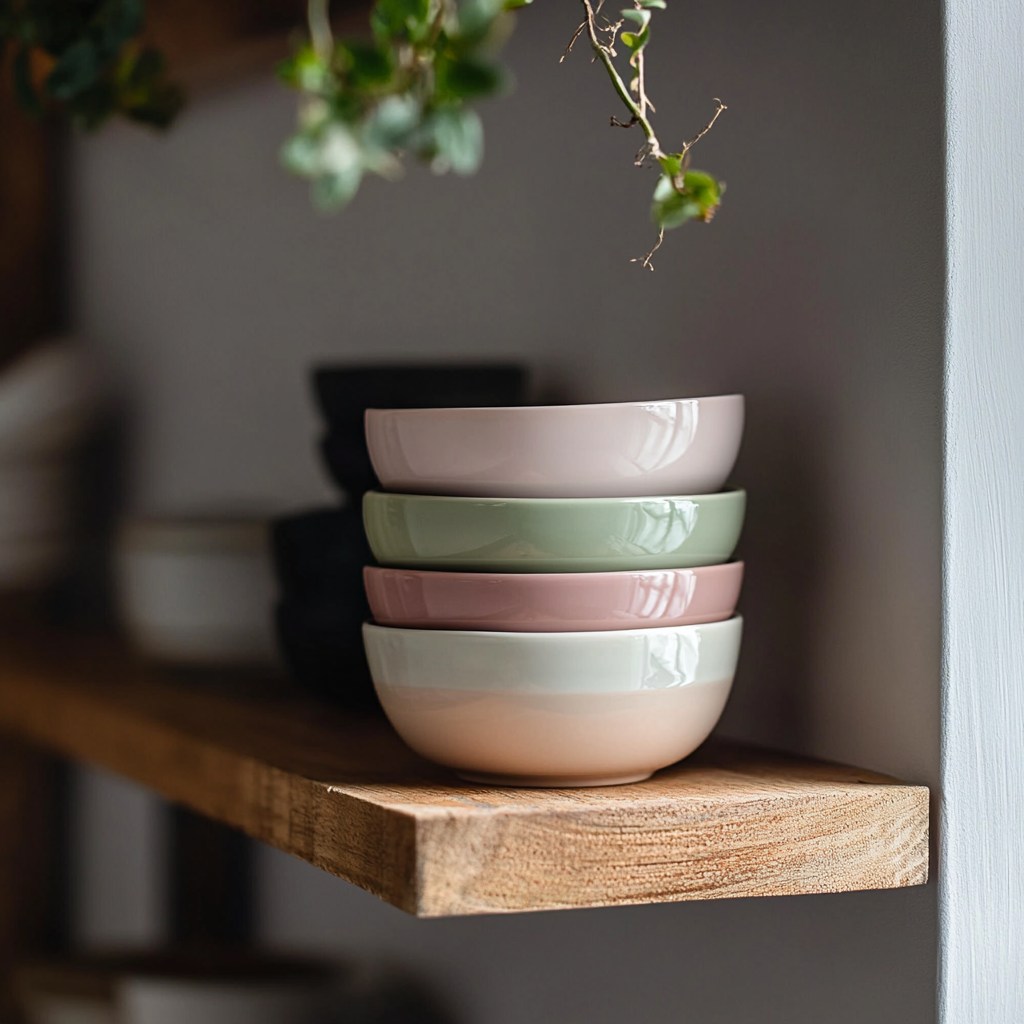
- Ceramic Pitchers and Jars: These serve dual purposes—stylish containers for utensils or dried flowers, and artistic pieces.
- Centerpieces: A neutral-toned ceramic bowl filled with fresh produce or minimalist candles on a dining table adds warmth and focus.
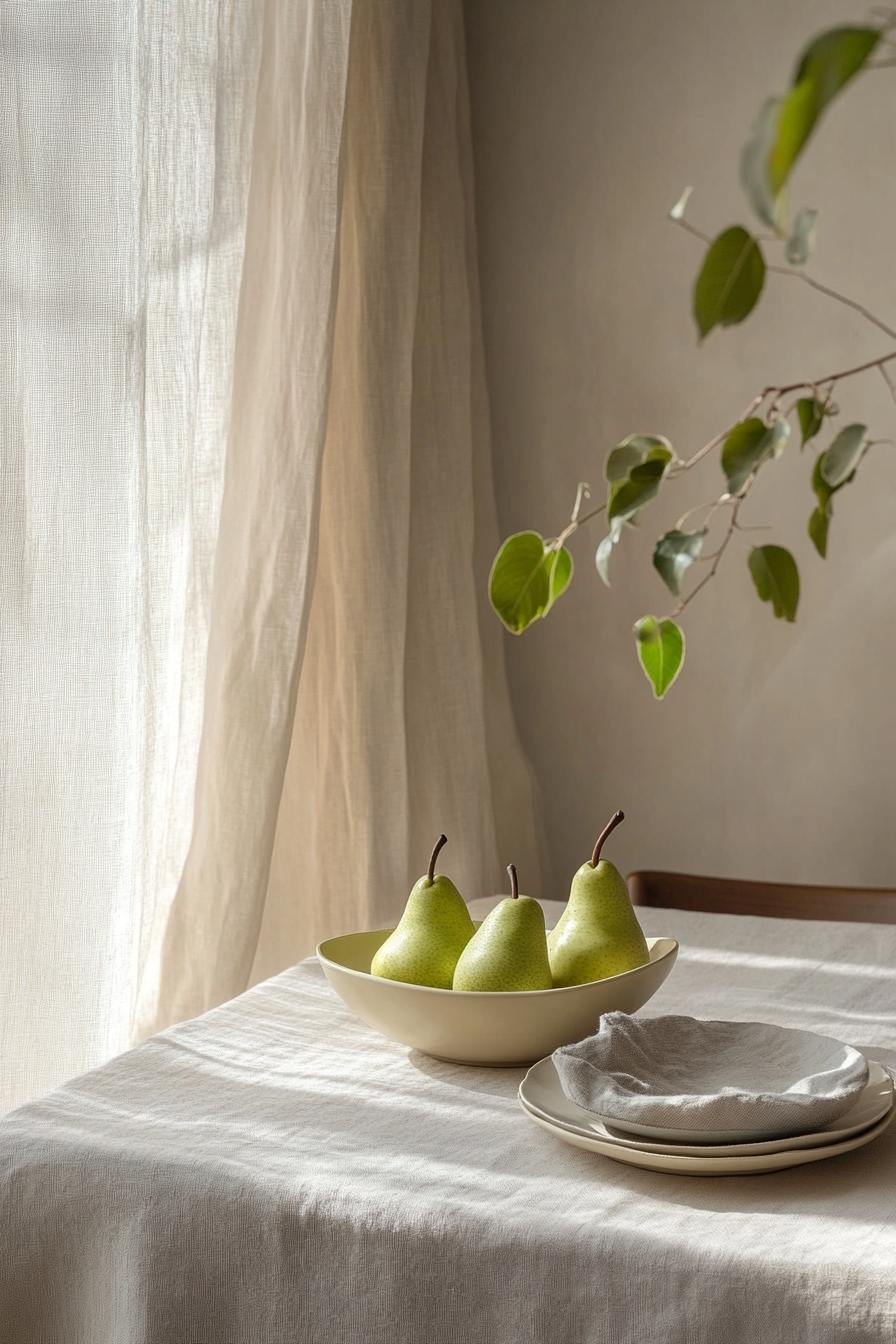
Bedroom: Quiet Sophistication
- Ceramic Lamps: Bedside lamps with ceramic bases in soft hues act as understated luxury accents.
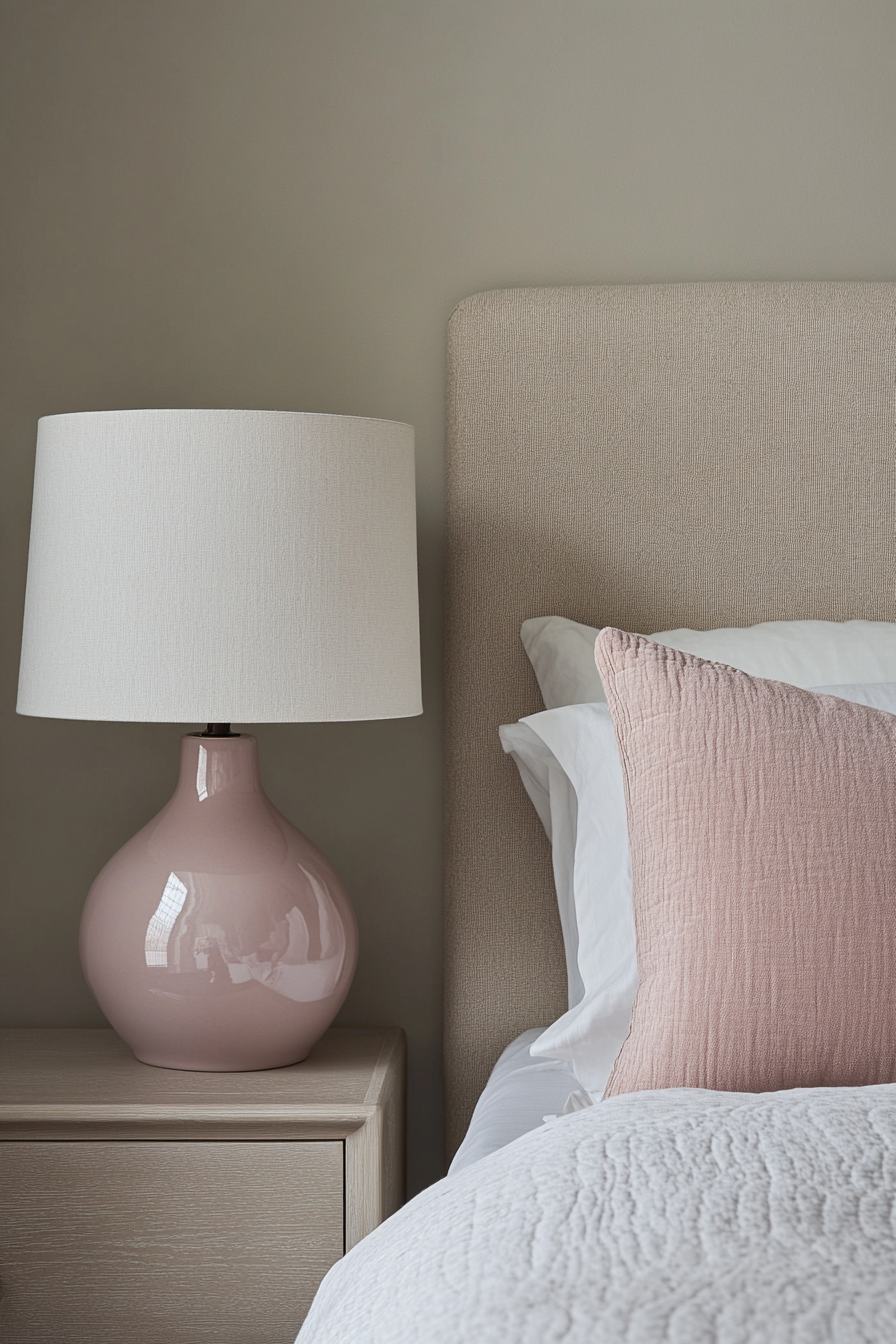
- Decorative Trays: Use ceramic trays on dressers or nightstands for jewelry or essentials.
- Planters: Small ceramic pots with greenery introduce a sense of life and serenity.
Bathroom: Spa-Like Touches
- Soap Dishes & Tumblers: Replace plastic containers with artisan ceramic versions to elevate daily routines.
- Wall Tiles: Subtle, handcrafted ceramic tiles on walls or backsplashes can define the entire aesthetic.
- Minimalist Diffusers: Ceramic oil diffusers in matte white or sand tones enhance both decor and mood.
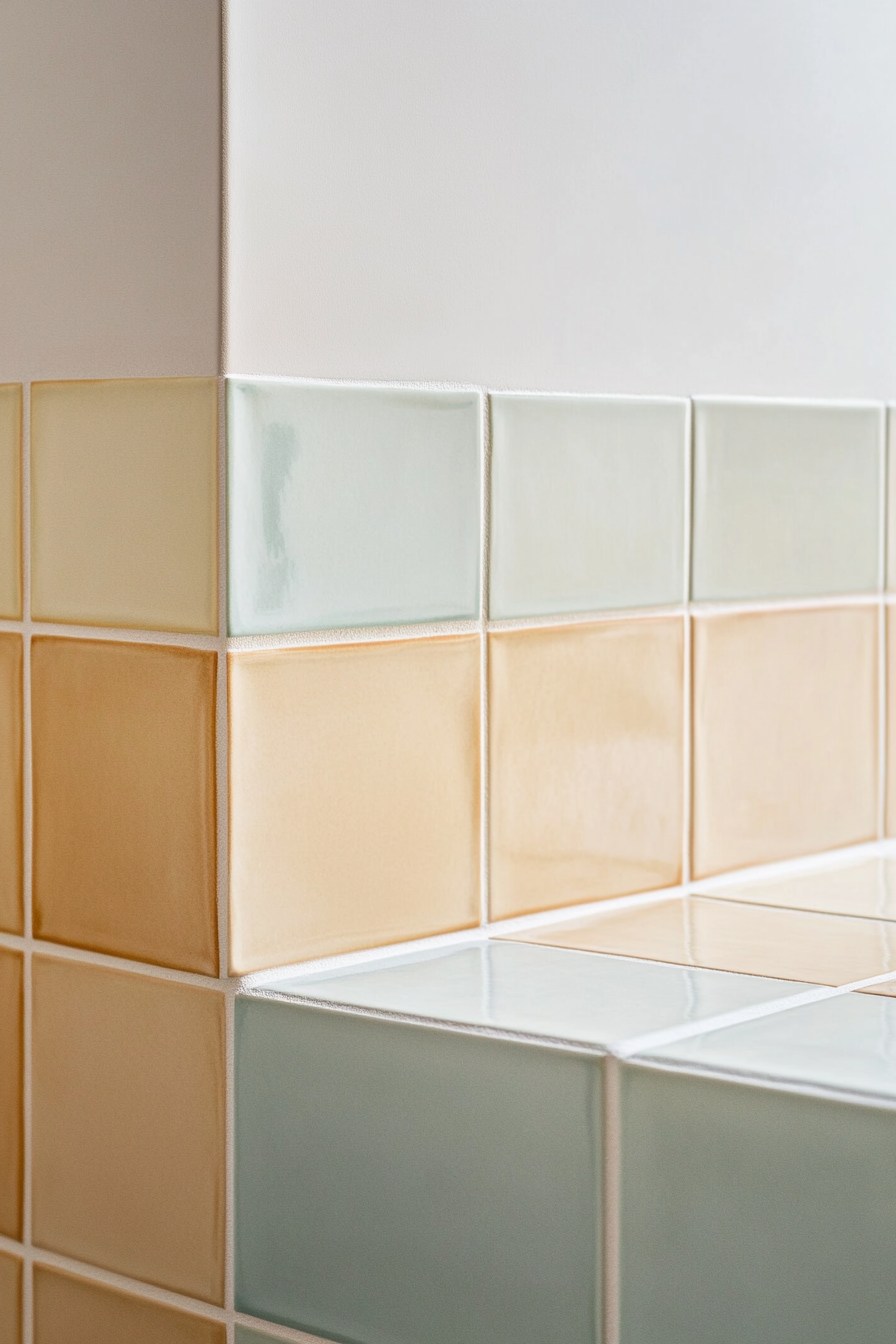
Entryway: First Impressions
- Ceramic Bowls or Catchalls: Perfect for keys, coins, or jewelry—adding charm to a minimalist console.
- Wall Art: A small ceramic tile piece or wall-mounted planter sets the tone for the home’s simplicity.
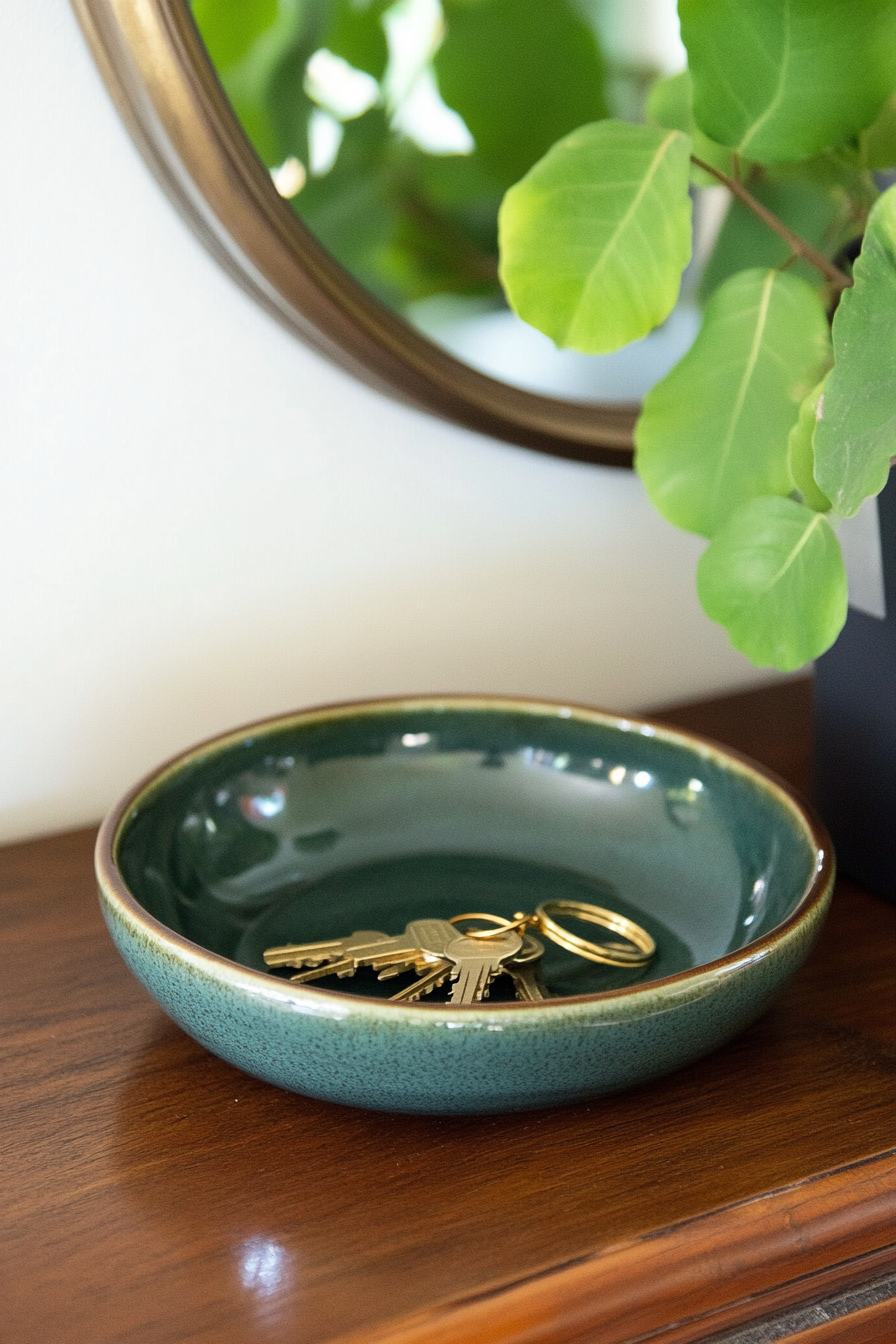
Bringing Ceramic Art into Office Interiors
Home Offices: Personal Yet Professional
- Desk Accessories: Ceramic pen holders, coasters, and organizers combine form with function.
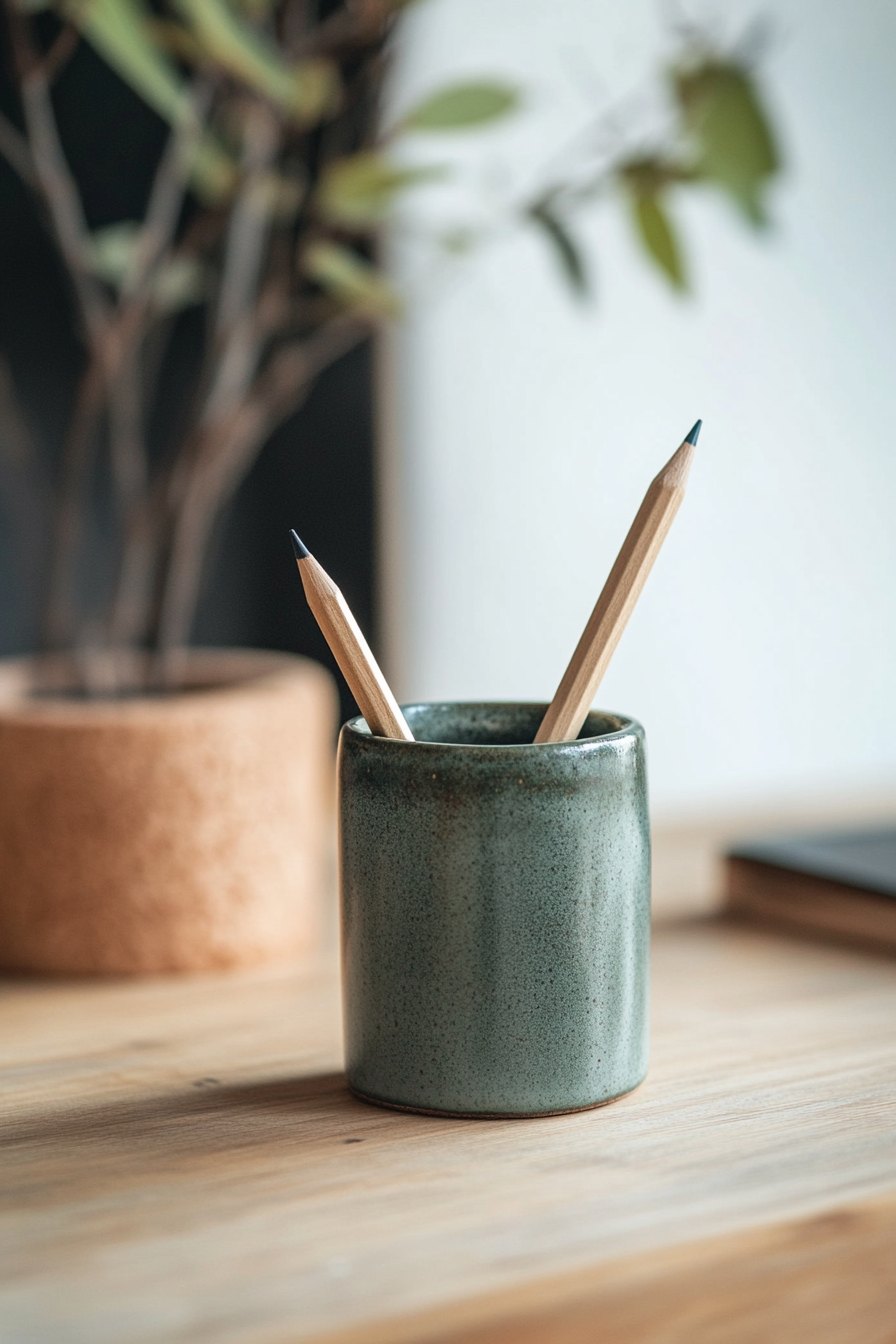
- Planters for Focus: Tiny potted plants in ceramic containers keep the space calm and refreshing.
- Bookends and Sculptures: Functional yet aesthetic pieces provide visual anchors on bookshelves or desks.
Corporate Office Spaces: Minimalism That Inspires
- Reception Areas: Use ceramic planters or bowls with neutral floral arrangements to make a calm first impression.
- Meeting Rooms: A large ceramic centerpiece on the table encourages quiet focus.
- Accent Walls: Incorporate ceramic wall art or tiles in strategic spots to break monotony while retaining elegance.
Break Rooms and Lounges
- Ceramic Coffee Mugs and Trays: Replace generic kitchenware with handmade ceramic pieces to encourage a homey, warm atmosphere.
- Decorative Objects: Small ceramic animals or abstract forms can bring charm to otherwise utilitarian areas.
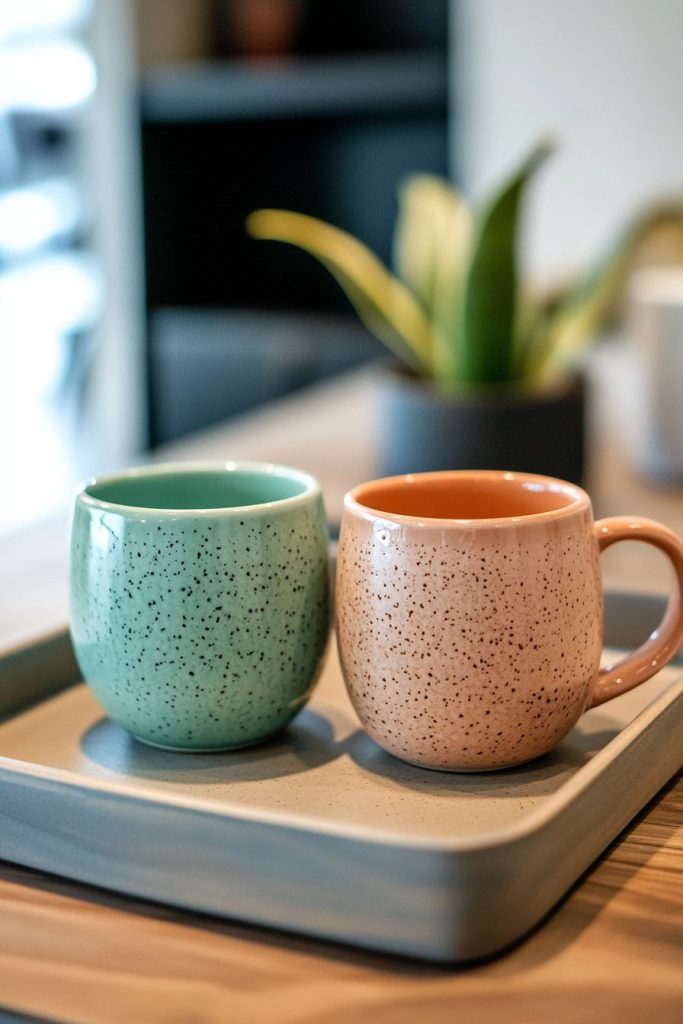
Styling Tips: Choosing and Placing Ceramic Art
Let Pieces Breathe
Minimalist design thrives on negative space. Place ceramics with enough room around them so their form and texture stand out.
Stick to a Unified Palette
Choose pieces in complementary colors. Whites, beiges, grays, muted blues, and earthy tones integrate smoothly with minimalist color schemes.
Focus on Scale and Proportion
A large sculpture might work better in an open living room, while smaller ceramic accents are better suited to tighter spaces like bathrooms or desks.
Layer with Natural Elements
Pair ceramics with other natural materials—wood, linen, stone, or dried botanicals—for a rich yet minimal composition.
Use Lighting Strategically
Position ceramics near soft lighting sources to emphasize their contours, glaze, and shadows. Even matte pieces gain new depth with proper illumination.
Exploring Ceramic Styles That Match Minimalist Vibes
Matte and Unglazed Ceramics
These pieces reflect natural light softly and exude understated sophistication.
Hand-Thrown Pottery
Imperfect edges and subtle curves add organic beauty, reminding us of the artist’s hand.
Monochromatic Glazed Pieces
When a pop of gloss is needed, consider solid-colored glazes in neutral shades.
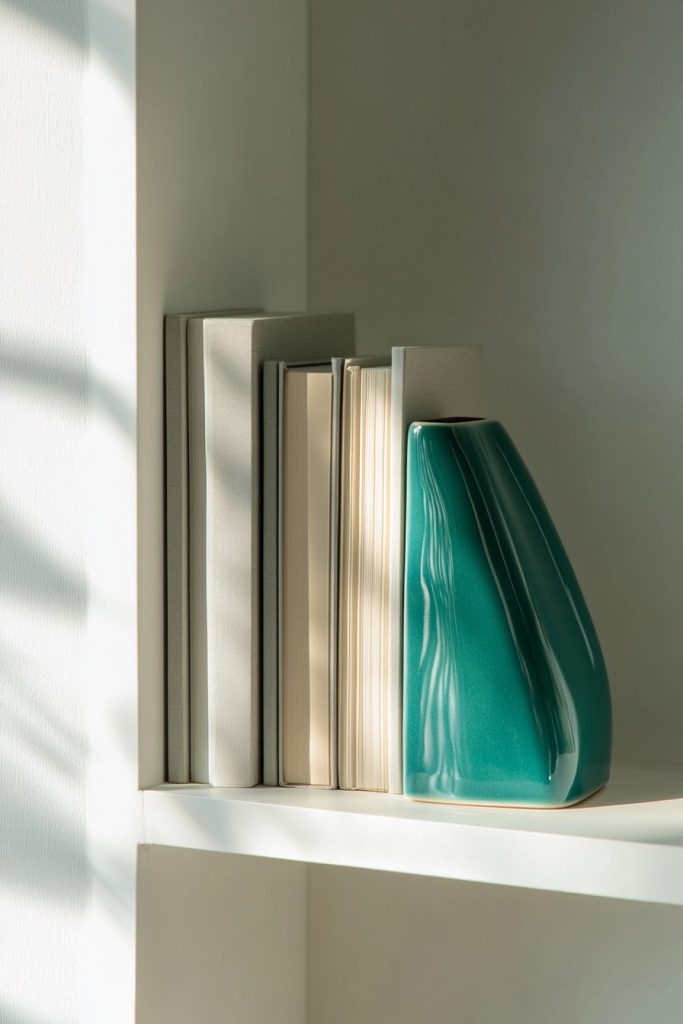
Modern Sculptural Ceramics
Contemporary forms—geometric, abstract, or biomorphic—can act as minimalist art pieces without clutter.
Textured Surface Ceramics
Carved or etched textures catch shadows and introduce tactile detail without introducing busy patterns.
Finding and Commissioning Ceramic Art
Support Local Artisans
Explore craft fairs, studio sales, and small artisan markets. Meeting the maker adds a personal story to every piece.
Online Marketplaces
Websites like Etsy, Handmade at Amazon, and Notonthehighstreet offer a wide range of styles and price points. Use filters to find minimalist designs.
Ceramic Galleries and Exhibitions
Visiting contemporary ceramic art exhibitions can open your eyes to collectible pieces that blend fine art with function.
Commission Custom Work
Working with an artist allows you to tailor the piece to your space—whether it’s color, size, or purpose.
Sustainability and Ceramic Art: A Natural Pairing
Minimalist living often values sustainability. Ceramic art aligns perfectly with these values:
- Made from earth-based materials
- Long-lasting and durable
- Often made by hand in small batches, reducing environmental impact
- Avoids mass-produced plastic decor and waste
Investing in ceramic art is not only an aesthetic choice but also an eco-conscious one.
Case Studies: Real Homes and Offices Featuring Ceramics
Urban Loft Living Room
A matte black ceramic urn anchors a bright white shelf. A pair of ivory ceramic birds perches quietly beside a linen sofa.
Scandinavian-Style Kitchen
Neutral-toned, wheel-thrown bowls are placed above light wood cabinetry. A sleek white ceramic pitcher is both centerpiece and water jug.
Creative Co-working Office
The reception desk features a slab of concrete softened by a row of handmade terracotta planters. Ceramic pendant lights hang above the café space.
Conclusion: Elevating Stillness Through Clay
Minimalist spaces are about clarity, balance, and peace. But peace need not be void. Ceramic art adds dimension, humanity, and an organic spirit to minimalist interiors. It doesn’t shout—it speaks quietly through form, texture, and the grounding power of natural material.
Whether in a quiet living room, a clean kitchen, a restful bedroom, or a focused office, ceramic art brings gentle depth and lived-in warmth. These pieces honor tradition while embracing modern simplicity. They create harmony without noise.
In a world overloaded with stimulation, ceramic art whispers elegance into the silence of minimalist design—and that makes all the difference.
Frequently Asked Questions (FAQ)
Why is porcelain a good choice for minimalist decor?
Porcelain offers clean lines, smooth textures, and subtle color variations that align perfectly with minimalist principles. It brings elegance without overwhelming a space.
What’s the difference between ceramic and porcelain?
Porcelain is a type of ceramic made from finer clay and fired at a higher temperature, making it more durable and less porous. Both are suitable for minimalist decor, but porcelain often has a smoother, refined finish.
Can porcelain art be both decorative and functional?
Absolutely. Many porcelain pieces—like bowls, vases, mugs, and trays—serve functional purposes while acting as beautiful minimalist accents.
How do I choose colors for porcelain decor in a minimalist space?
Stick to muted or pastel tones such as ivory, soft blues, sage greens, blush pinks, or terracotta. These hues complement neutral palettes commonly found in minimalist interiors.
Where can I find quality porcelain decor pieces?
You can source them from local ceramic artists, online marketplaces like Etsy, design boutiques, or custom-order pieces directly from studio potters.


